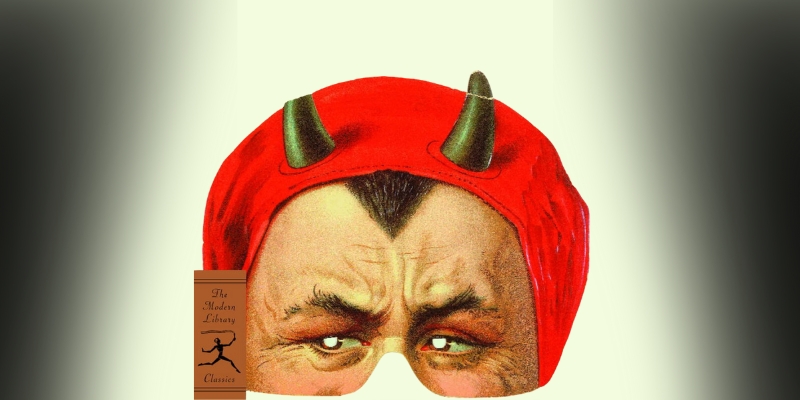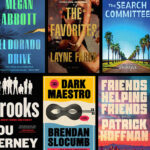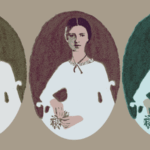There is something undeniably captivating about people who transgress. We all know it, whether we get our fix from true crime, from horror fiction or from the front page of the daily papers. It is a very human instinct, to lean towards those who do not accept or abide by the rules on which the rest of us have agreed.
As people trapped in our own perspectives, we spend our lives trying to understand other people and the decisions they make. The fact that some transgress boundaries that we feel to be impenetrable makes them infinitely interesting, even when their actions disgust us.
I have always loved fiction that examines the human capacity for monstrousness, just as I have always loved fiction that examines the political and social structures under which we exist. When a book manages to bring those two goals together, what emerges is a piece of fiction that shocks and horrifies us, but which also tells us something real, something urgent and timely, about the systems we have built around us, or which have been put in place without our knowing; books that talk about racism, colonialism, misogyny and more.
These, for me, are books that stand the test of time, that say something about the human condition and about the nature of corrupting power. They have as much to say when they are published as they do fifty or a hundred or several hundreds of years later.
It was these books that I was committed to emulating when I was writing my debut novel, Orpheus Builds a Girl, from a place of sheer rage. Incandescent about political movements against women’s bodily autonomy, and angry at the way crimes against us were excused and forgotten—especially for women existing at intersections of oppression—I came across a story that solidified everything that was wrong into one central figure: that of Carl Tanzler.
It was not only Tanzler’s terrible actions that spurred me to write Orpheus Builds a Girl, but the myriad ways he was pardoned, condoned, defended and ultimately absolved in the eyes of the general public. This, I thought, is what we do. This is the monstrosity that we allow of men.
My novel was an attempt to force complicity in the reader, to put them in the perspective of a villain who believes himself not to be one, or perhaps who knows what he is, but knows too of the ways that he might mislead onlookers. But it was also an attempt to show the effects of these crimes, and to show that a victim cannot only be seen through the eyes of the person who hurt them, but by those who loved them too. That such crimes leave a space inside of a story where a person used to be.
Below are the books that continue to inspire me for their bold, unflinching ways of looking at the monstrous man, both the real and fictionalized versions of him. Some are lush and consuming, others camply gothic, but all speak of real monstrousness and how it is allowed to exist. They stay with you, these books, and change you, in some way, so that you can no longer stand by while monsters operate. They are books that make you feel terrible, then make you want to change the world.
*

Vladimir Nabokov, Lolita
It is quite an achievement to write a book that gets so perfectly into the mind of a monster that it remains widely misunderstood even seventy years after its initial publication—and an even bigger achievement to write that novel in your third language.
A story purporting to be a tale of love and romance, written from the perspective of a child abuser about the child he abused, Lolita struggled to find a publisher and, when it was released, in France, it was called “sheer unrestrained pornography” by the editor of a British newspaper. The British Home Office was told to seize all imported copies; it was banned in several countries. By the time it was published in the US, in 1958, it’s notoriety was firmly cemented. It has sold fifty million copies since then.
Lolita is a book despised and adored in equal measure, and for the same thing: for its ability to channel the mind of a terrible man. The novel is relentless in its perspective, offering nowhere for the reader to run. They are Humbert Humbert, for three hundred and thirty six pages; they are forced to look at Delores through the eyes of a man who has the most inexcusable, abominable desires.
And by reading the book they are forced to confront the existence of such men, as well as the harm they do. Few books change culture, and even fewer manage to do so while being beautifully written; it is to Nabokov’s immense credit that the opening lines of a book about a paedophile are some of the most widely quoted, even today.
The Lolita Podcast, by Jamie Loftus, makes for a wonderful ‘further listening’ adjunct to the book, exploring its impact on both culture and individuals with insight and charm.

Hanya Yanagihara, The People in the Trees
I picked this novel up in a bookshop in Bangalore on the beauty of the cover alone: an illustration of a turtle with orange and mint colored leaves across its back. Yanagihara was yet to become mega-famous for A Little Life, and I knew nothing about her or the story that inspired The People in the Trees—but I quickly fell in love with the novel’s bold voice, its intriguing literary choices and its descriptions of the fictional island of Ivu’ivu.
Presented as the memoirs of Nobel Laureate and scientific researcher Dr. Norton Perina—edited, for publication, by his friend Dr. Ronald Kubodera—the novel audaciously applies the Lolita methodology (that of placing the reader inside the mind of its central villain, trusting them to understand that they are being manipulated) to incredible effect, lulling the reader into a state of acceptance before hitting them with a truly brutal plotline.
Yanagihara based this story on that of the real crimes of Daniel Carleton Gajdusek, who won the Nobel Prize in 1976 for his work on the brain disease kuru. Into this story Yanagihara weaves a staggeringly sharp critique of modern colonialism, and yet still manages to write truly gorgeous descriptions of the fictional location in which the story is set, making the horrors all the more terrible, and the fiction all the more affecting. This remains one of my top five books of all time.

Patrick Süskind, Perfume: the Story of a Murderer
The 1980s might have been the decade that Hannibal Lecter was introduced to the world by Thomas Harris, first in Red Dragon and then in The Silence of the Lambs, but on the other side of the Atlantic, German writer Patrick Süskind was dreaming up another killer with sharp senses: Jean-Baptiste Grenouille, an orphan born in eighteenth-century France, whose preternatural sense of smell leads him first to the business of perfume and then onto somewhere darker.
Just as Lecter spends his time considering the perfect meal, Grenouille is obsessed with harnessing the perfect smell, one that he first smelled on the skin of a young woman, with which he has become dangerously preoccupied. His attempts to distill that essence into a liquid push him down a path of multiple murders as his singular goal overwhelms his respect for life, but despite being caught, he performs a trick at the end of the book which reveals the latent desires within the population in general, showing that he is not alone in having a streak of pure evil in him, bound up in sensory pleasure.
This is a novel that luxuriates in both filth and opulence, and says more about the nature of lust than we would like to admit.

Matthew Gregory Lewis, The Monk
One of the most controversial Gothic novels of its time, The Monk—or to give it its full, semi-ironic title The Monk: A Romance—follows the story of Ambrosio, a devoted Catholic, thrown into turmoil when one of his associates, the young and beautiful Rosario, reveals he is, in fact, a woman. On the verge of death Rosario—or Matilda—begs Ambrosio to make love to her, which he does, managing to cure her of her illness and engaging in an affair. Ambrosio the man and Ambrosio the Monk are set against each other, and only one of the two men can win.
Torn between his spiritual path and his very human urges, Ambrosio gives in to everything he has tried to repress and takes a dive deep into the darkest elements of himself. Melodramatic and high-pitched, The Monk is a story about a man’s fall into damnation, but it is also about the need to constrain one’s worst elements, to abide by social codes and boundaries, and to hold fast to your values in a world that wishes you to descend into the worst.
The book just about breaks every taboo, meaning it is still shocking some two hundred and thirty years after its publication; even its own author eventually found its content too much, and attempted to censor later editions. Yet it remains a book about a pure man who is made monstrous, and, though hysterical, tells us much about what happens when you fail to hold to your humanity tightly.
***


















